Everything You Need to Know About Mobile Battery Packaging
.jpg)
Mobile batteries have become an important component of our everyday lives. These batteries help our mobiles stay powered and connected. Most of these batteries are made of lithium-ion technology. Due to this, the role of effective and safe mobile battery packaging can’t be overlooked.
A mobile battery's packaging protects the battery's lithium-ion and lithium polymer cells from heat, moisture, static electricity, and impacts. It should be made with non-conductive dividers, foam inserts, tamper-evident seals, and clear labels. Maintain UN battery shipping standards and lithium battery transport regulations to reduce returns in retail and transit.
If your business sells or ships phone batteries, packaging is not an afterthought. It is the safety plan that protects every cell from factory to shelf. Strong cell phone battery packaging lowers damage, speeds inspections, and helps buyers trust your brand. Having a proper box, insert, and label will help you avoid claims and keep orders moving.
This guide walks through custom mobile battery packaging design, materials for retail and shipping, and the rules that apply on road and air. You will see where Mylar pouches fit, when a mobile battery blister package makes sense, and how corrugated battery boxes and foam inserts work together.
Let’s get started.
Understanding Mobile Battery Packaging
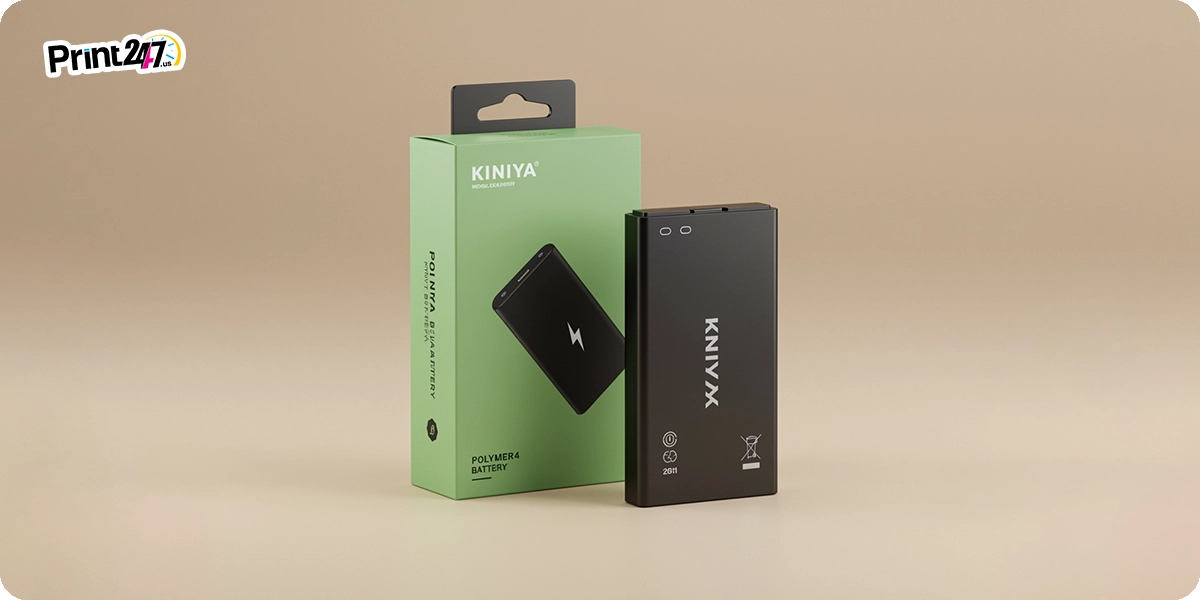
Batteries are energy storage devices. During shipping, energy is subjected to shock, heat, and static. In many ways, good packaging acts as a shield. This minimizes metal contact, limits moisture and dust, and facilitates clear handling of the product. In turn, this leads to fewer returns and a faster flow of products through warehouses and hubs.
What is Mobile Battery Packaging?
Mobile battery packaging refers to unique boxes or bags specially designed to protect, store, and transport the mobile phones battery. It covers all the layers around a single cell or a pack made for phones.
It starts with primary packaging that touches the product, such as an ESD safe Mylar bag or a formed blister.
It adds secondary packaging for unit sales or bulk moves, such as paperboard cartons, rigid battery boxes, or corrugated outers with non-conductive dividers and foam.
Together, these layers manage impact, static, and moisture while giving space for model data and warnings.
Importance of Proper Mobile Battery Packaging
Proper packaging performs two main functions at a time. First it protects the battery and secondly your brand at the same time. By covering terminals, it prevents shorts. In this way, tabs will not bend due to limited movement. In storage, it prevents static electricity and moisture from harming the cells. It gives carriers and store employees access to clear information regarding watt-hours and chemistry.
Besides barcodes and QR codes, it also supports fast scanning. When these points line up, your loads pass checks with less back-and-forth, retailers accept deliveries faster, and shoppers see a clean, trustworthy product. In short, smart packaging saves money by avoiding rework and claims.
List Of Industries That Need Mobile Battery Packaging
Here’s the list of industries that need effective mobile battery packaging.
The Levels of Mobile Battery Packaging
Think in layers. It is the primary packaging or inner packaging that comes into contact with the battery and controls static and moisture. On the other hand, secondary packaging or outer packaging carries the mobile battery through retail and shipping. Advanced materials used in the construction of packaging add extra safety for tough routes, hot climates, or very tight compliance needs. Your mix should match your supply chain and your risk map.
Primary Mobile Battery Packaging (Inner Packaging)
.webp)
he core purpose of primary (inner) mobile phone battery packaging is to fully protect it from physical damage, short circuits, and movement. The primary requirement of this packaging is to be non-metallic and non-conductive.
Here’s the further explanation of inner battery packaging.
Mylar Bags or Pouches
Mylar bag or pouch is a popular mobile’s primary battery packaging solution because it seals tight and blocks moisture. For sensitive cells, choose static-shielding film that bleeds off charge and protects electronics. A heat seal gives a clean, tamper-evident edge and better shelf life.
Resealable zips help service centers and refurb lines. You can add a desiccant and a humidity card when the route crosses humid zones or long ocean moves. Mark the pouch with the model number, chemistry, and QR for traceability. When you sell replacement parts, Mylar pouches also reduce dust inside the retail box, which keeps inserts and manuals clean.
Blister Packs With Backing Cards
A mobile battery blister packaging with backing card secures the unit in a formed pocket. It is clear, which helps buyers confirm the connector and size without opening the pack. Clamshells can include a hang hole for peg displays and a locking tab that shows tamper signs if opened.
Add a printed card behind the blister for directions, warnings, and support details. For tight-fitting phones, a small rib inside the cavity keeps the battery from sliding, which avoids scuffs on labels that carry model data and barcodes. Blisters are also good for anti-theft fixtures since staff can scan barcodes without removing the product.
Secondary Mobile Battery Packaging (Outer Packaging)
.webp)
The basic purpose of secondary packaging for mobile batteries is safety from crushing, dropping and containment. It should be strong and rigid and made according to IATA Dangerous Goods Regulations (DGR) and the UN Manual of Tests and Criteria (UN 38.3).
Here’s the further explanation.
Cardstock and Paperboard
Paperboard or cardstock boxes are light, print well, and store flat. They are highly suitable for mobile battery retail display and small parcel shipping. Use eco-friendly cardboard boxes with recycled content where brand policy calls for it. Inside the battery box, you can add a simple non-conductive sleeve or a chipboard wrap to keep terminals away from walls. Side flaps provide a clean die-line that reduces the possibility of labels being rubbed by open seams. The cardboard also clearly displays QR codes and warranty markings, which helps voice search and mobile scanning feed buyers the correct information.
Corrugated Boxes With Inserts and Foam
Corrugated mobile battery boxes provide strength for shipping and pallet stacking. There are die-cut inserts inside each unit to prevent them from rattling. Adding foam inserts to batteries will cushion them and protect tabs and cables from damage. You should choose the density after you have tested the drop and vibration.
EPE and cross-linked PE are common materials used for trays and cavity blocks. A lid card over the foam locks the unit in place during long truck routes. This simple detail cuts cell phone battery damage from top pressure and stops corners from digging into labels. Corrugated is also good for wholesale battery packaging where DC teams need speed with fewer products.
Plastic Casings
In repair networks and B2B service flows, plastic battery boxes in PP or PET give repeat use and high impact strength. There are latches on the lids, and a tamper-evident strip lets you know if someone has opened the case. These plastic casings make sense where oil, dust, or moisture are part of daily work. It is helpful to add a small vent when temperatures change in order to balance pressure. Having the battery's model and Wh (watt-hours) printed on the long side makes it easier to identify the battery in stacks.
Advanced Materials Used in Mobile Battery Packaging For Enhanced Safety
With lithium-ion mobile battery technology advancing, significant improvements have been made in packaging materials. The use of these advanced materials enhances safety, largely by reducing thermal runaway and electrical insulation.
Here are some key materials used in this matter.
Chipboard Layers
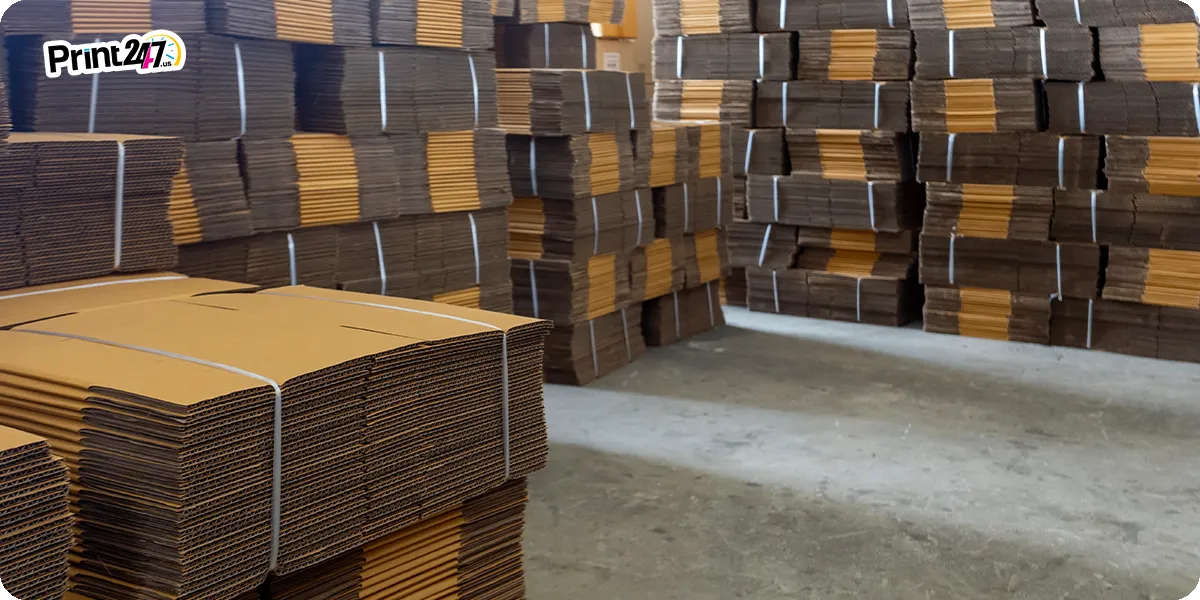
Chipboard (also known as solid fiberboard or carton board) is a thin but strong material. It is primarily used in custom mobile battery packaging for compartmentalization, mechanical separation, and terminal protection. Use it as sleeves around the battery or as top and bottom supports in retail cartons. In addition, it reduces label rub by spreading the load away from fragile corners. It also helps blisters sit flat when boxed, which keeps the face clear for prints and warnings.
Anti-Static and Moisture-Resistant Coatings

Paperboard or cardstock used can carry static and absorb water. Essential coatings are critical protective layers used in various stages of the battery lifecycle to solve both problems. For example, anti-static coatings lower surface charge, so sensitive parts are safer in dry air. On the other hand, moisture-resistant coatings help cartons keep their shape through damp warehouses and loading docks. These finishes also protect the print so warnings and icons stay clear.
Fire-Resistant and Heat-Resistant Materials

Some shipments face high heat or long storage in hot climates. Add heat-resistant battery packaging layers inside master cartons. Adding thermal pads or fire-resistant liners near high-risk cells should give handlers more time to react in case something goes wrong. In addition, trays can be vented so any heat that collects on the pack can be dispersed rather than accumulated in one spot. Also, lithium polymer pouches may swell under stress and this is helpful.
Renowned Mobile Battery Packaging Styles and Structure
Depending on its structure, every packaging looks and opens differently. There is a strong focus on shelf appeal and clarity in retail styles for cell phone batteries. Packaging for these batteries requires strong stacking and quick checks for eye-catching displays in markets. It is common for brands to blend both by using a retail carton inside a tested master case. In this section, we will explain some famous mobile battery packaging styles and structures.
Retail Display Styles

You might know that 70% of purchase decisions are made in the store. For a commodity-like product such as a mobile battery, retail display is often only the salesperson on the floor. And for an effective and well-organized display, packaging plays a vital role.
Folding Cartons (Tuck-end, Reverse-tuck, and Roll End Tuck)
Folding cartons are the backbone of the retail industry. Tuck-end and reverse-tuck box styles are fast to set up, which helps co-packers and in-house teams to pack the batteries quickly. Roll end tuck boxes add more edge strength and a clean front panel for long graphics. Ideally, you should use a thin nonconductive sleeve or a chipboard cradle to prevent the battery from sliding. To make the return/check process easier for the store staff, add a tear strip that can be opened without tools.
Sleeve and Tray
In order to make a premium mobile battery packaging design, sleeves are slipped over trays. The tray holds a foam cavity or a paperboard insert that locks the unit. The sleeve offers space for a large model callout, a QR code for installing video, and clear danger icons. This format is ideal for brand launches or carrier programs where you want a clean, uniform wall of product. It also keeps secondary seals hidden but accessible to inspectors.
Window Boxes
When we add a window in the mobile battery packaging box, it lets shoppers see the actual battery and connector inside it. Use a PET window bonded to the inside panel. Keep corners rounded to prevent cracks. Place model numbers near the window so buyers can match their phone fast. A small reinforcing frame around the cutout maintains panel strength in transit.
Shipping and Logistics Styles

In view of the fact that mobile batteries (especially lithium-ion) are classified as Class 9 Hazardous Materials under UN and IATA standards, their logistics packaging requirements are stringent.
Here’s the breakdown.
Corrugated Master Cartons
Bulk quantity battery shipping needs strong outer packaging that stacks well. In case of light loads or long routes, use a single wall, and in case of heavy or long loads, use a double wall in packaging.
Structural support is created by creating inner cells or honeycombs that prevent the stacks from crushing the products inside. You should print the UN battery shipping standards marks on both sides of the battery. Make sure the main label is on the same side across all SKUs to simplify scanning. You should add a contrasting panel that shows your emergency phone number if your lane requires it.
Custom Inserts and Thermoformed Trays
Thermoformed trays and inserts are unsung heroes of custom mobile battery packaging. They hold each unit in a pocket shaped to the battery. The tight fit prevents battery movement, which is a key safety practice. For mixed units, color-code the tray edge or emboss the model into the plastic. Add a lid card to stop the up-and-down rattle. In parcels, a tray inside a small corrugated shipper reduces corner crush and keeps the retail carton clean for the shelf.
Emerging Styles

Now there has been a fantastic shift in mobile battery packaging styles. It has now been transformed by major emerging styles like smart packaging with QR or NFC and minimalist styles.
Here are more details.
Smart Packaging with QR or NFC
Smart features on battery packaging link each unit to lot data and install help. A QR code sends the buyer to a model-specific guide or a warranty form. NFC adds quick tap checks in service centers. With these tools, you can track returns by lot and date in order to combat counterfeits. In addition to voice search, they also support mobile self-help by displaying the correct page upon scanning.
Minimalist Designs for Lower Material Use
Minimalist packaging does not mean less safe. It means fewer parts that do not add protection. A paperboard sleeve with a strong insert can replace a thick clamshell in many cases. Use recycled boards where you can and reserve plastic for trays that truly need it. With this change, freight costs are lowered, waste is reduced, and the change still passes all tests.
Safe Practices and Safety Features in Battery Packaging
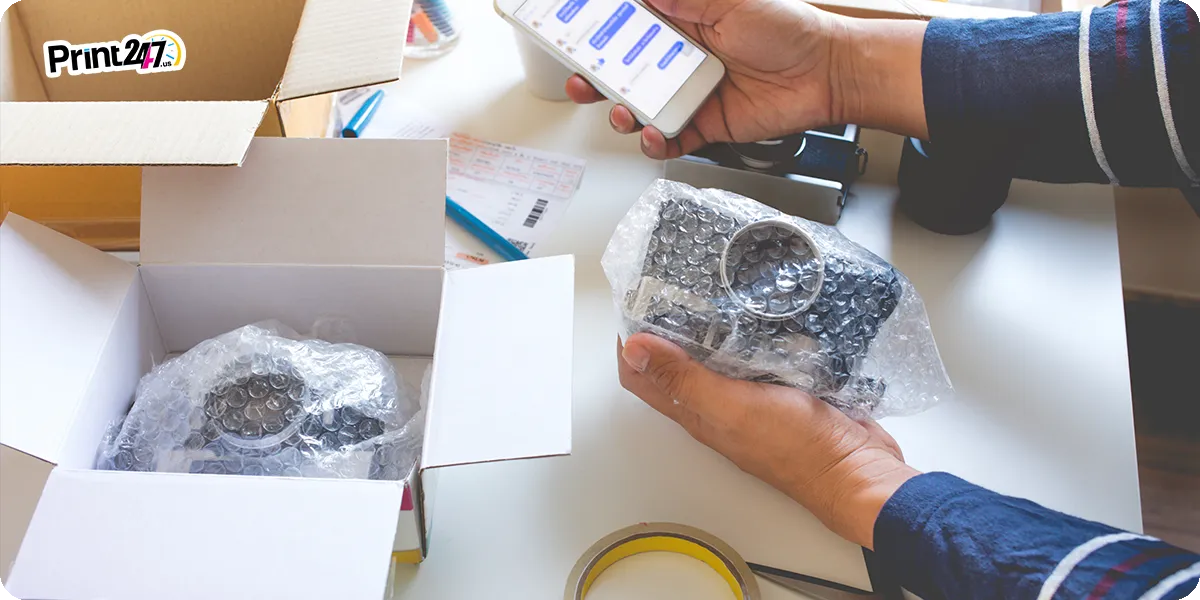
In order to achieve safety, you must follow a process. It begins with packing out and continues through storage, picking, and delivery. Using these practices keeps the risk of failure low without slowing down a team's performance.
Terminal Protection and Isolation
Cover each terminal of the mobile battery with caps or approved tape that does not leave residue. To prevent units from touching, add non-conductive dividers. Keep a small gap around each cell inside the insert. These steps stop arcing if the box is dropped and protect labels from rub.
Shock and Vibration Control
The density of the foam should be matched to the results of your drop test. A well-fitting cavity that supports edges prevents tab damage and label scuff. Add a lid card to stop vertical bounce on long truck routes. In air moves, use inserts that keep the weight centered so the corners do not crush under load.
Moisture and Heat Management
Use moisture-resistant mobile phone battery packaging for humid lanes. Add desiccant where storage runs long. Place products away from outer walls that face heat or cold. For hot zones, include heat-resistant battery packaging liners or thermal pads. Venting in trays gives heat a path out instead of building up.
Static Control Across the Line
Static is silent but harmful. Use anti-static battery boxes, pink foam, and ESD Mylar. Ground tables and racks in pack areas. Make sure electrostatic discharge signs are placed near the line so staff are aware of them. By controlling ESD, yields are improved and random failures are reduced.
Tamper Evidence and Clear Labels
Ensure that retail units and master cases are secured using tamper-evident seals. It is important to place the model, chemistry, and Wh in a convenient location that handlers can find them. Ensure that symbols and copy are large enough to be read at arm's length. As a result, picking mistakes are reduced and inspectors are able to clear loads more quickly.
Traceability with Barcodes and QR
Provide a scannable code for each level of the container: the unit, the inner box, and the master carton. Link codes to lot and date. With traceability, recalls can be sped up and shelf life can be better measured. The smart codes can also guide technicians through the installation of videos that will reduce errors during the repair process.
Popular Printing Techniques For Mobile Battery Packaging
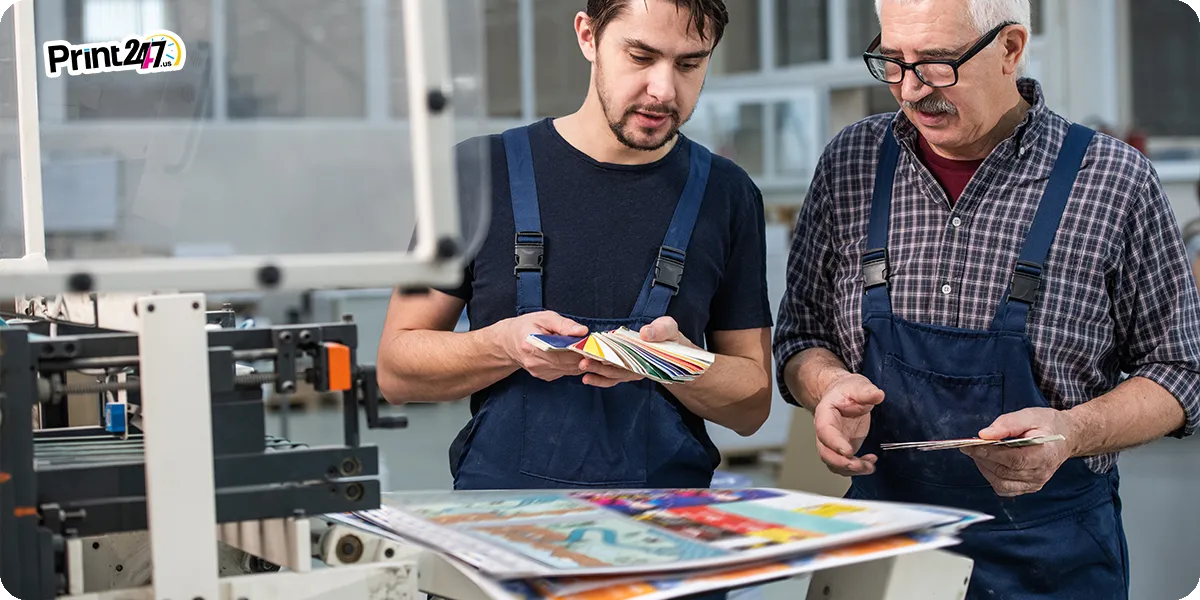
Print is not only for looks. It guides safe use and speeds scans in stores and DCs. A good print plan for a mobile battery box keeps colors true across runs, makes warnings easy to read, and protects panels from rub during shipping.
Color Models and Brand Control
CMYK lets you print full images with smooth tones on sleeves and cartons. PMS inks lock in a logo color so it looks the same on every shelf. When you run mixed units, create a color guide that shows both values. This keeps private label partners and co-packers aligned and prevents off-shade cartons that weaken shelf impact.
Printing Methods
Digital printing is the fastest way to produce many versions and small runs. It is great for pilot launches or regional packs. Offset printing delivers sharp type and low unit cost at scale, which works for paperboard cartons and sleeves. Flexographic printing is ideal for corrugated masters with large, solid areas. Screen printing shines on rigid battery boxes and thicker plastics where you want long-lasting marks.
Finishing and Functional Effects
Embossing and debossing add a textured feel to brand marks or safety triangles so fingers find them fast. Foil on security seals in battery packaging helps staff see tampering. Die-cut windows show the connector without opening the pack. Raised spot UV draws attention to model numbers or QR codes. Soft touch films add a premium feel and reduce glare for scanners. Anti-scratch lamination protects panels from rub as cartons slide on belts and pallets.
Coatings That Work in the Real World
Aqueous coating dries fast and gives light rub protection in picking lines. Spot gloss UV helps important text stand out. For heavy handling, anti-scratch laminate is a smart choice on retail faces. On corrugated shippers, a clear varnish keeps large text readable after stretch wrap. These choices help your mobile battery packaging design survive the trip and still look clean at delivery.
Final Thoughts
Strong mobile battery packaging does four things well. It protects the cell with terminal covers, non-conductive dividers, and snug inserts. It keeps labels readable so staff pick the right part the first time. It passes the rules for the route without drama. It also looks clean and consistent so buyers trust what they see.
If you want a reliable manufacturer, Print247 is ready to help. We are a mobile battery packaging manufacturer focused on safe, clear, brand-right solutions. We offer free design support for your dielines and inserts, eco-friendly materials that still meet strength needs, fast shipping across the United States, and physical samples for your team to test.
Whether you need custom mobile battery packaging for retail, a mobile battery blister package for mass display, our team builds what you need and guides you through each step.
FAQs
How long do mobile batteries last in packaging?
Most phone batteries ship at a managed state of charge and can hold quality for months if stored cool and dry. When using moisture-resistant battery packaging and rotate stock. Track lots with barcodes so older units ship first. For long storage, add desiccant in ESD Mylar pouches.
How many types of packaging materials are available for mobile packaging?
Core choices include ESD Mylar pouches, blister packs, paperboard cartons, corrugated battery boxes, foam inserts, chipboard sleeves, and rigid battery boxes. Your mix depends on route risk, retail needs, and cost. Test a few options with real drops and vibration so you can pick with data.
What is the best insert for tabs and connectors that bend easily?
A thermoformed tray or precision foam cavity works well. Both hold edges and leave space where tabs sit. Add a lid card to stop vertical bounce. If you use paperboard inserts, reinforce the tab area with a chipboard patch so nothing presses on the connectors.
What should I ask a mobile battery packaging manufacturer before ordering?
Find out about ESD films, foam densities, and paperboard grades, as well as closure methods. Please confirm that they can clearly print the Wh and chemistry. Data on drop and vibration tests on your dieline is requested. You should check if they support smart codes for tracking lots. When they offer samples, test them on your real route.































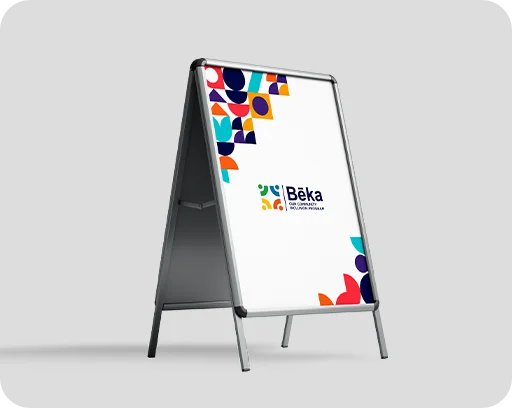


















.jpg)
.jpg)
.jpg)